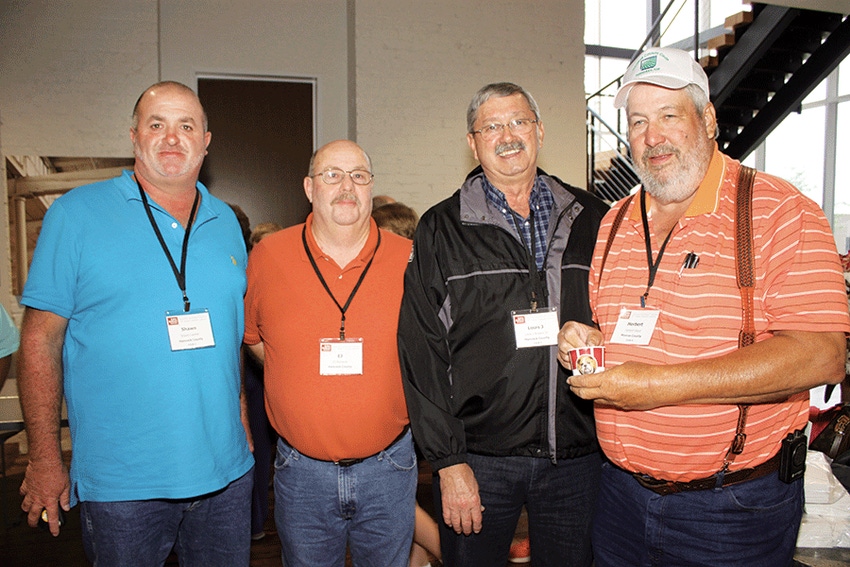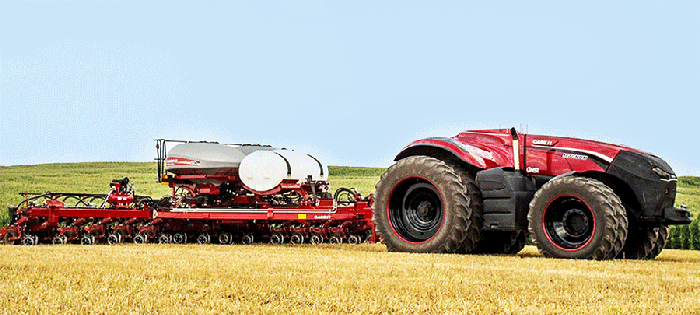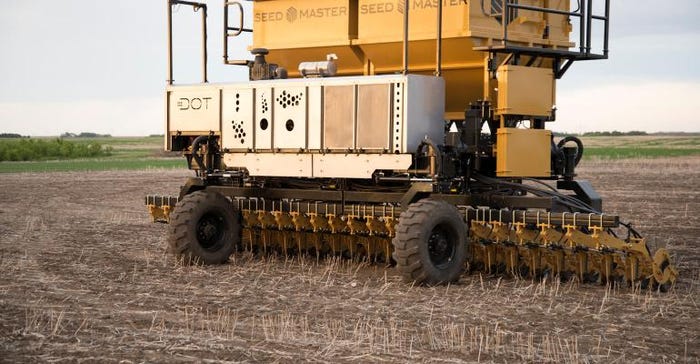
It’s inevitable, says Todd Janzen, that equipment manufacturers will offer tractors, combines, and other equipment that can operate without a human aboard. Some are already available, others are in the design concept/prototype stages.
But, he said at the Mississippi Farm Bureau Federation Summer Commodity Conference at Mississippi State University, farmer adaptation of these machines may come more slowly than for robotic equipment for dairies and other operations that require a lot of humans and/or hard labor.
“I think that’s where the huge advancements will first come,” says Janzen, who heads Janzen Ag Law at Indianapolis, Ind.
“Lely Astronaut robotic milking machines (http://bit.ly/2ts85EA) are becoming popular in Indiana. The interesting thing about these machines is that they’ve made it possible for small dairy farms to survive, compared to the past when small dairies had to get bigger in order to stay competitive. One of these machines can milk about 100 cows per day, so if you can afford the machine, you don’t have to become a 600-cow or 700-cow farm. Lely also has a robotic feed pusher that saves additional labor.
“There are also robotic swine feeders, and robotic machines are appearing in speciality crops that are very hand- and labor-intensive.”
The availability of autonomous tractors, combines, sprayers, and other machines is pretty much a given as more electronics and software are incorporated, Janzen says.
TECHNOLOGY ALREADY EXISTS
“Case IH made a big splash last year at the Farm Progress Show with a prototype autonomous Magnum tractor, but in most modern farm machines the technology is already there for autonomous operation. Most of them, you could take the farmer out and the machine could do the job on its own — provided it didn’t encounter any problems.

The Case IH autonomous tractor prototype made a big splash at last year's Farm Progress Show.
“Kinze has been working for several years on autonomous grain carts that function without an operator as the combine is moving through the field. John Deere of France introduced a one-off design concept for an electric tractor — pretty interesting because it has some advantages for autonomous farming. You no longer have to worry about a diesel engine and all the maintenance it requires. Just charge up the machine and it can do the rest.
“There are some big hurdles with electrification of machinery, but it can be done, and it could make farms more energy-independent because many farms have ways to generate electricity through solar, wind power, anaerobic digesters, etc. There are definitely a lot of possibilities, and I think we’ve only seen the tip of the iceberg of what’s coming.”
“The move to autonomous operation could bring changes in machinery configuration, Janzen says. “If we take operators out of the equation, we probably won’t need the enormous equipment we have today. Instead of bigger planters, for example, we could do a lot of the work with smaller equipment. A company called Rowbot (http://rowbot.com) has a machine that goes between corn rows to spray for weeds, rather than having a giant sprayer go across the field.”
A Canadian engineer and inventor rethought the idea of a farm power unit, designing a new way to maximize labor-free farm work. Check out the DOT Power Platform at http://bit.ly/2sRC4Bh

The DOT Power Platform provides autonomous operation for several pieces of farm equipment.
GETTING TO/FROM FIELDS
With robotic/autonomous farming, Janzen says, “We have to ask ourselves, what’s the real problem we’re trying to solve? With a robotic tractor, yes, you may need extra labor sometimes during the year — but most of the year you don’t. However, dairy, poultry, or swine farms need labor 24/7/365, so these operations will be sort of low-hanging fruit on the robotic/autonomous farming spectrum.”
For autonomous tractors and other row crop machinery, Janzen says, “I think the first big challenge is that these machines always have to travel to a field — and that can be an enormous problem. It’s one thing to for it to criss-cross a field to plant or do other work, or maybe cope with encountering a deer in the field, but it’s another to think about it moving down a public highway to get from your farm shop to a field, and then move back on the highway to go to another field.
“Another consideration, if you’re a pesticide applicator, in most states you have to be licensed to do that. Who’s going to have the license for a robotic sprayer, and who’s going to be responsible if it erroneously sprays a neighbor’s crop and kills it? Is the manufacturer going to say, well, the farmer programmed it wrong, while the farmer says, no, I programmed it correctly — it’s a software problem? We certainly aren’t in a climate right now where we need more issues about pesticide drift onto non-target crops.
“I think the Silicon Valley companies, like Tesla, the manufacturer of electric cars that have self-driving capability, will solve the on-road autonomous problems for cars and trucks, and that software will eventually filter down to farm machines.”
FARMER AS MISSION CONTROL
A lot of robotic technology is already available, Janzen says, and could be commercialized on the farm, “but what we don’t really have yet is acceptance. Farmers, for the most part, aren’t ready to get out of the tractor or combine cab — they want to be out there in the field, seeing how things are going.
Eventually, I think this will change, particularly in operations where there’s a high need for labor. Maybe the farmer’s not going to leave the tractor or combine cab, but they may not always have an extra person to drive a grain cart, or do other operations, and I think that’s where we’ll see autonomy first.”
Still, he says, “I think we can envision the day when the farmer is something like a mission control director at NASA, monitoring machines in the field that are doing a lot of things at once.”
Janzen writes a blog on legal issues in agriculture (http://aglaw.us) and welcomes comments from readers about ag technology.
About the Author(s)
You May Also Like




